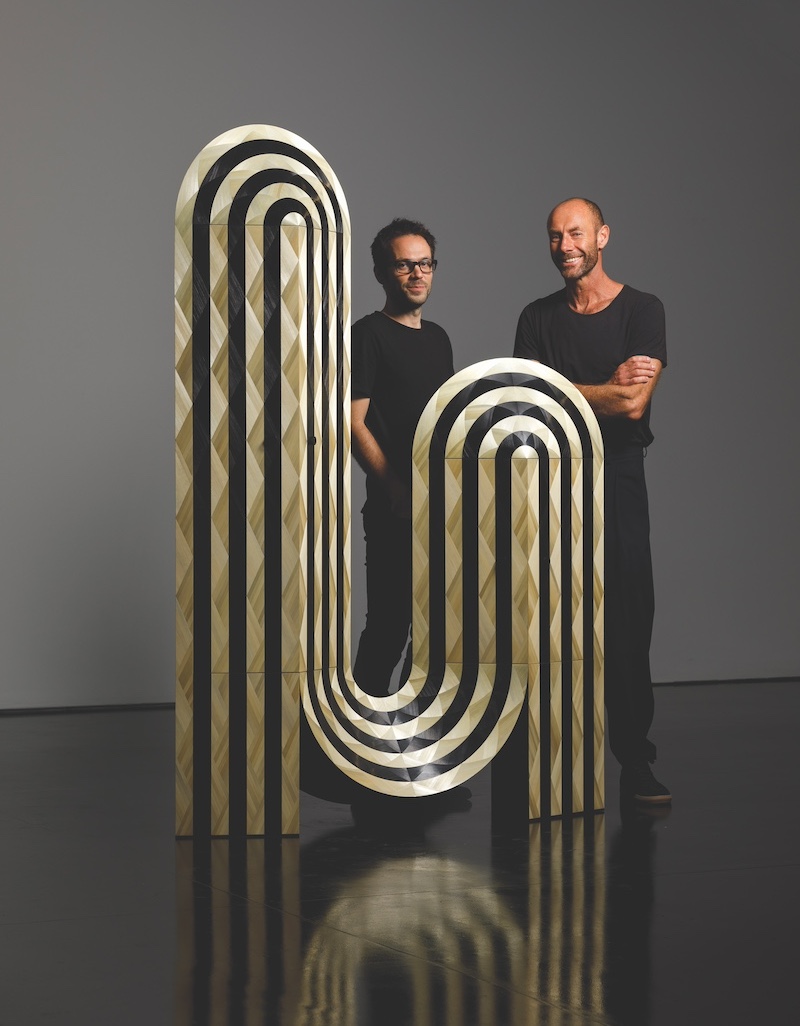How did you meet?
AG: Arthur moved to Sydney from Paris in 2015 and set up a studio not far from mine. He got in touch when he was building up his local design network, and from there we formed a friendship that was helped along by a mutual love of design.
Where did you derive your interest in design?
AG: As an industrial designer from Perth, Australia, my process is anchored in a sense of inventiveness, resulting in designs that are honest and full of integrity. I have worked with global brands such as Cappellini, Alessi, Louis Vuitton, Cartier, and Veuve Cliquot, and won the triennial Rigg Design Prize in 2015, which is the highest accolade for contemporary design in Australia.
AS: I come from Paris, France, and have spent the last ten years refining my craft in the tradition of 17th century French decorative arts. After graduating from École de la Bonne Graine furniture-making school, I honed my hand as an apprentice to a harpsichord maker and then to a master restorer. It was during this time working alongside marquetry artiste Lison de Caunes, granddaughter of renowned Art Deco designer André Groult, that I discovered my passion for straw marquetry, or “marqueterie de paille.”
What fuels your creativity?
AS: That answer lies in the preservation of the old craft of straw marquetry and finding new ways to express it. The lengthy handmade preparation and application process of straw marquetry rebels against the constraints of the modern age, retaining the rigour of a golden age in artisan culture and the materiality of agrarian society.
Arthur, can you say, with references to cultural tradition, how French culture finds its way into
your practice?
AS: During the reign of Louis XV (r.1715-74), straw marquetry enjoyed great esteem in France. In the early 20th century, it experienced a revival thanks to Art Deco luminaries such as André Groult, Jean Royère, and Jean Michel Frank. Currently, globally there are only around 25 artisans trained to practice this intricate and exacting craft, and I am one of the only known artisans working with this technique in Australia.
When did the idea to join industrial design with French marquetry originate?
AG: It was when we worked together on a charity auction piece in 2015. This project involved the reinvention of the famous Series 7 chair designed by Arne Jacobsen, and it opened our eyes to the possibility of creating something truly innovative. Arthur’s desire to modernise the 17th-century craft, coupled with my inspiration drawn from the technique, birthed our collaboration, A&A. From there we created our first piece, the Bloom cabinet, which was acquired by the National Gallery of Victoria in 2018, and first solo exhibition Exquisite Corpse/Cadavre Exquis at Tolarno Galleries in 2020.
Above: Adam Goodrum and Arthur Seigneur behind their Mother and Child, Cabinet, 2021-22. Photo: Andrew Curtis.
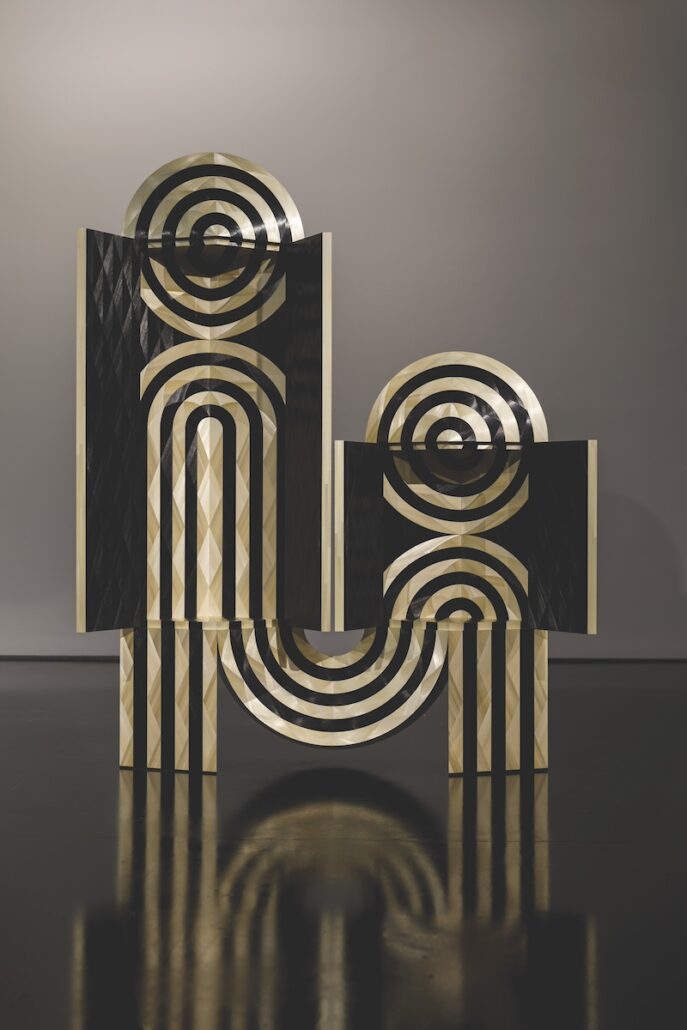
A&A, Mother and Child, Cabinet, 2021-22. Custom dyed rye straw, birch ply,
200 x 140 x 35cm. Photo: Adam Curtis.
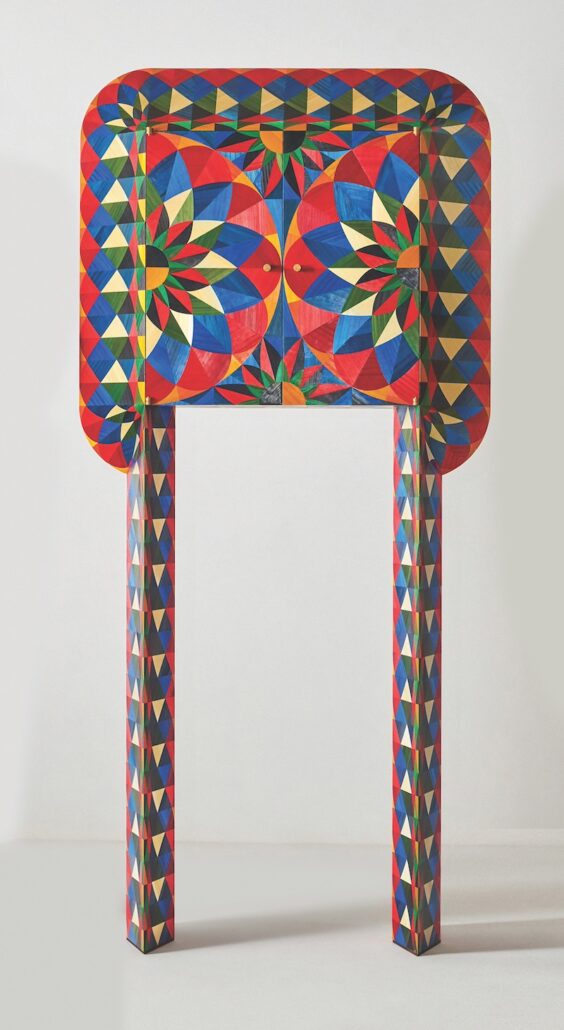
A&A, Talleo, Tallboy from the Exquisite Corpse Collection, 2019. Custom dyed rye straw, brass,
180 x 85 x 36 cm. Photo: Victoria Zschommler.
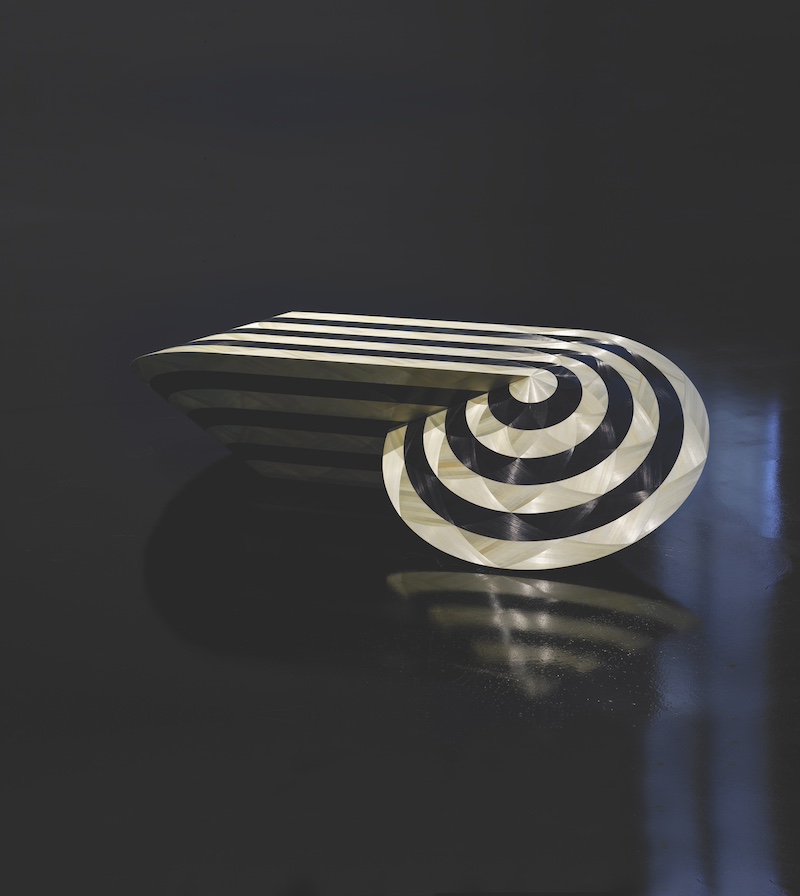
A&A, Continuum, Table, 2021-22. Custom dyed rye straw, birch ply. 40 x 160 x 92cm. Photo: Andrew Curtis.
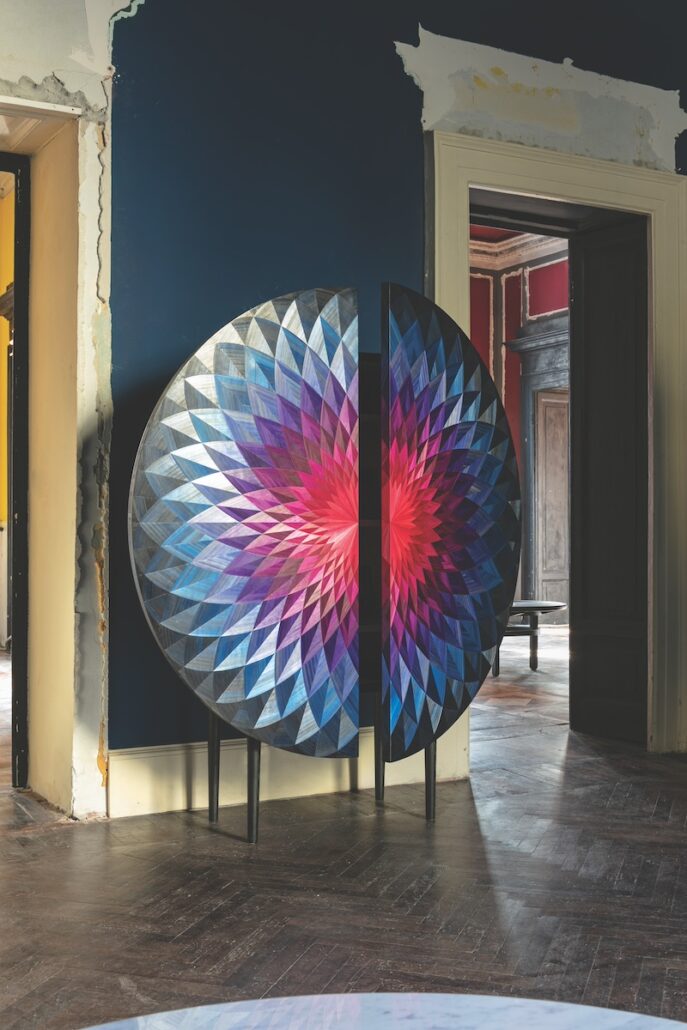
A&A, Bloom, Cabinet, 2018. Oak, White maple and dyed rye straw, 163.5 × 140.5 × 46.5cm. Photo: Josh Purnel.

